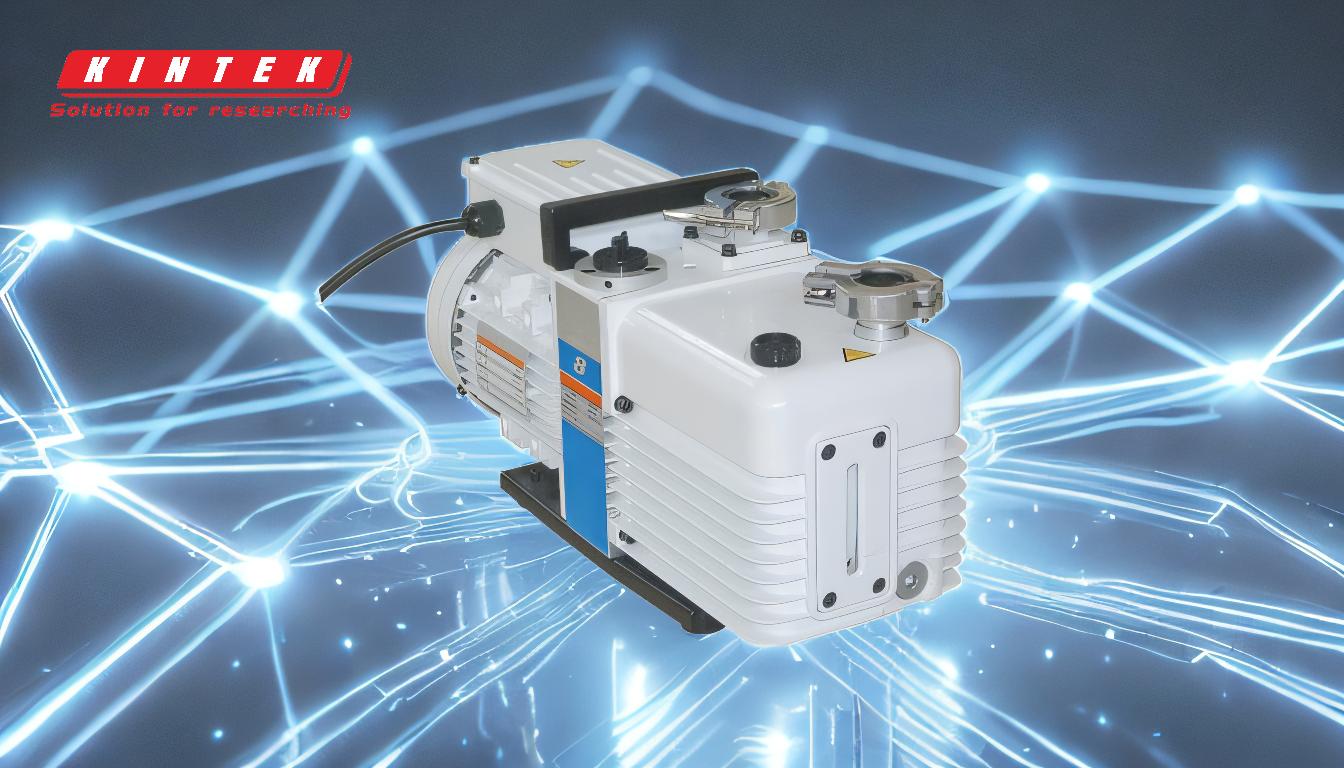The pressure range for a rotary pump, specifically a rotary vane vacuum pump, is a critical factor in determining its suitability for various applications. These pumps are widely used due to their cost-effectiveness and ability to handle continuous suction and dry gas extraction. They operate effectively in atmospheric conditions and are equipped with air filters to remove dust particles. The pressure range is influenced by the specific tasks the pump is designed for, such as laboratory applications, and the type of gas being pumped. Understanding the pressure range helps in selecting the right pump for efficient and reliable performance.
Key Points Explained:

-
Pressure Range for Rotary Vane Vacuum Pumps:
- Rotary vane vacuum pumps typically operate within a pressure range of 10^-3 to 10^-2 Torr (millitorr) for high vacuum applications and atmospheric pressure to 10^-1 Torr for rough vacuum applications.
- The exact pressure range depends on the pump's design, sealing efficiency, and the type of gas being pumped.
-
Factors Influencing Pressure Range:
- Gas Composition: The chemical composition of the gas affects the pump's efficiency. For example, momentum transfer pumps are more effective on certain gases, while entrapment pumps work better with others.
- Pump Design: Rotary vane pumps are designed for continuous suction and dry gas extraction, making them suitable for specific pressure ranges.
- Application Requirements: The required pressure range is determined by the specific tasks, such as laboratory experiments or industrial processes.
-
Applications and Suitability:
- Rotary vane vacuum pumps are ideal for tasks requiring continuous suction and dry gas extraction.
- They are commonly used in laboratories for processes like vacuum filtration, degassing, and drying.
- Their ability to operate in atmospheric conditions with air filters makes them versatile for various environments.
-
Advantages of Rotary Vane Vacuum Pumps:
- Cost-Effective: They are the most affordable option for vacuum pumping.
- Ease of Use: These pumps are straightforward to operate and maintain.
- Durability: With proper maintenance, rotary vane pumps can provide long-lasting performance.
-
Limitations:
- Rotary vane pumps are not suitable for pumping corrosive or reactive gases without additional modifications.
- They may require regular maintenance, such as oil changes, to maintain optimal performance.
By understanding the pressure range and factors influencing it, users can select the right rotary vane vacuum pump for their specific needs, ensuring efficient and reliable operation.
Summary Table:
| Aspect | Details |
|---|---|
| Pressure Range | High Vacuum: 10^-3 to 10^-2 Torr; Rough Vacuum: Atmospheric to 10^-1 Torr |
| Key Applications | Vacuum filtration, degassing, drying, and laboratory processes |
| Advantages | Cost-effective, easy to use, durable, and suitable for dry gas extraction |
| Limitations | Not ideal for corrosive gases; requires regular maintenance (e.g., oil changes) |
| Influencing Factors | Gas composition, pump design, and application requirements |
Need help selecting the right rotary vane vacuum pump? Contact our experts today for tailored solutions!





